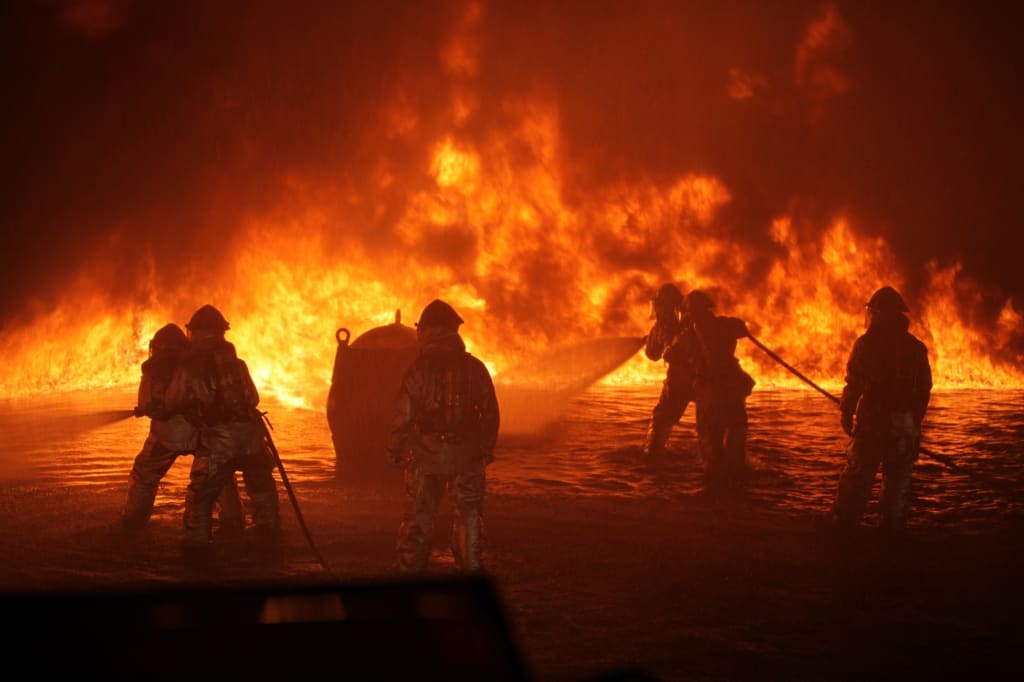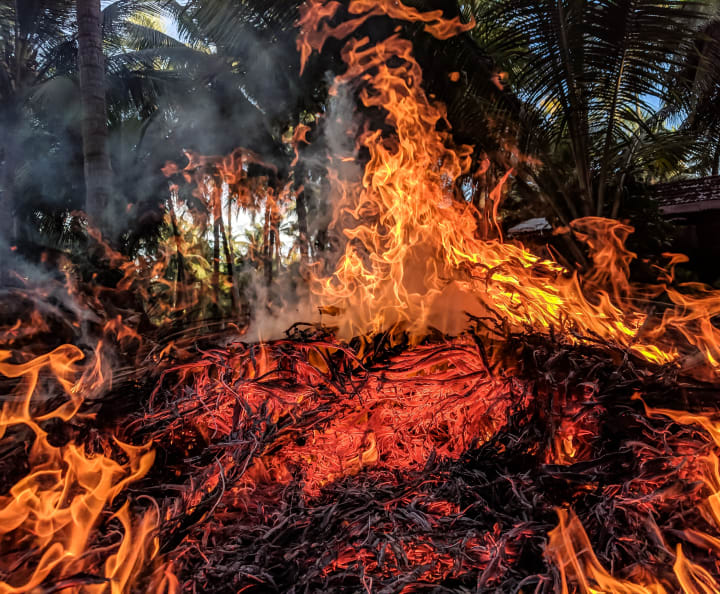Lawmaker Attempts to Promote the Construction of Wildfire Resilient Homes. LATEST NEWS IN US.
Climate change has been a key factor in increasing the risk and extent of wildfires in the Western United States. This is happening because higher temperatures caused by climate change are leading to increased drought, more insect and disease damage and changing weather patterns.

The Growing Threat Of Wildfires In The Western United States
The western United States has been grappling with a growing threat of wildfires in recent years. The combination of droughts, high temperatures, and strong winds have fueled the flames, causing extensive damage to homes and natural habitats. The 2020 wildfire season was particularly devastating, with California alone experiencing over 9,000 fires that burned over 4 million acres of land. These wildfires have not only caused immense financial losses but also claimed numerous lives and displaced thousands of people from their homes.
Climate change has been a key factor in increasing the risk and extent of wildfires in the Western United States.
This is happening because higher temperatures caused by climate change are leading to increased drought, more insect and disease damage and changing weather patterns.
"Last year, wildfires burned 4.25 million acres of California - and we are potentially headed toward an even more destructive year with escalating drought conditions," said Senator Padilla.
The fire was the costliest in state history and the 10th costliest wildfire in U.S. history, causing over $2 billion in losses.
With climate change exacerbating these conditions, it is becoming increasingly important to take measures to prevent and mitigate the damage caused by wildfires. Lawmakers are now looking at promoting the construction of wildfire-resilient homes as a way to reduce the impact of these disasters on communities in the western United States.
Global warming and climate changes are causing an increase in temperatures and more droughts nationwide which contributes to an increase in wildfire risk.
The series of bills will significantly increase investments to tackle wildfires and fund resiliency and mitigation projects for communities impacted by the recent rise in Western wildfires.
Lawmaker Proposes Legislation To Promote Wildfire Resilient Homes
In response to the increasing frequency and severity of wildfires, a lawmaker has proposed legislation aimed at promoting the construction of wildfire resilient homes. The legislation would provide incentives for homeowners to retrofit their homes with fire-resistant materials and implement landscaping practices that reduce the risk of wildfire spread. Additionally, the bill would require new home construction in high-risk areas to meet certain fire-resistant building standards.
HB 23-1096 was drafted to expand the wildfire mitigation resources and grant program to help promote wildfire-resilient home construction.
The bill also expands the Energy Department's weatherization program so that homes can be retrofitted to make them more resilient to wildfire through the use of fire-resistant building materials and other methods.
House Bill 23-1075 was written to create a program to study wildfire evacuation and clearance time modeling for areas that have a high risk for forest fires.
The proposed legislation comes after a particularly devastating wildfire season, which saw thousands of homes destroyed and dozens of fatalities. The lawmaker hopes that by encouraging homeowners to take proactive measures to protect their properties, communities can better withstand future wildfires. The bill has garnered support from environmental groups as well as the insurance industry, which stands to benefit from reduced payouts in the event of a wildfire.
The state's most destructive wildfire, the Marshall fire, destroyed over 1,100 homes and businesses in Boulder County in December 2021.
"As wildfire seasons turn into wildfire years, we must take proactive measures now to protect our communities," said Congressman Panetta.
Bill sponsor Sen. Dylan Roberts, D-Avon, said making homes more resilient against wildfires will also lower insurance costs for all residents and will help to prevent wildfires from spreading to other communities.
Challenges And Opportunities For Implementing The Proposed Legislation
One of the biggest challenges for implementing legislation promoting wildfire resilient homes is the cost. Building homes that can withstand wildfires can be expensive, and it may be difficult for some homeowners to afford these upgrades. Additionally, there may be resistance from builders and developers who are hesitant to change their current construction practices.

The new bill came about to create a wildfire-resilient homes grant program within the Division of Fire Prevention and Control.
There are measures homeowners and the building industry can take to better prepare homes in the wildland-urban interface (WUI).
While some homeowners have started to make fire-proofing changes on their own, most don't.
Another challenge is ensuring that the legislation is effective in reducing wildfire risks. This requires careful planning and consideration of various factors such as location, building materials, and landscaping practices.
Suggesting that pregnant women may also be at greater risk to adverse effects from wildfire.
The cost of wildfire resilient measures can vary, depending upon the location, risk exposure, building size and features, as well as other factors.
However, there are also opportunities for implementing this legislation. By promoting the construction of wildfire resilient homes, lawmakers can help protect communities from devastating wildfires. This can also create jobs in industries such as architecture and construction. Additionally, if done correctly, these measures could ultimately save homeowners money in the long run by reducing property damage and insurance costs associated with wildfires.
A one-pager for the full legislative package can be found HERE .
Now working to rebuild, Samaroo said she has taken precautions to protect her home from future wildfires, but most in her community have not.
And we will create millions of good-paying, unionized jobs building the automobile fleet of the future.
Save landowners and local governments money by investing in wildfire prevention and natural hazard mitigation on the front end, which is thirty times more cost-effective than recovering forests and watersheds after natural disasters have struck.
The Future Of Wildfire Resilient Homes And The Importance Of Collaboration
The future of wildfire resilient homes looks bright, but it will require collaboration between lawmakers, builders, and homeowners. With the increasing frequency and severity of wildfires, there is a growing demand for homes that can withstand these natural disasters. Lawmakers have taken notice and are making efforts to promote the construction of wildfire resilient homes through legislation and incentives. However, builders must also be willing to incorporate wildfire-resistant materials and design features into their projects.
House Bill 1273 seeks to create a grant program to incentive homeowners to make their houses more resilient against wildfires.
We will increase funding for firefighting by $18 billion for federal firefighters to deal with the increased severity and frequency of wildfires.
Homeowners and public policymakers also need consistent, science-based and verifiable ways to reduce wildfire risk, such as IBHS' Wildfire Prepared Home resiliency tool.
But because supply has really ramped up, now it is essentially the same price whether you use traditional building materials or more wildfire-resilient materials.
Homeowners can also play a role by maintaining their properties to reduce fire risk. Collaboration between all parties is crucial to ensure that these homes are not only resilient but also affordable and accessible to all communities at risk of wildfires. As technology advances and more research is conducted on wildfire behavior, the future of wildfire resilient homes will continue to evolve, making them even more effective in protecting against this threat.
About the Creator
General INFO
Welcome to our comprehensive repository of knowledge, where curiosity meets enlightenment.Dive into a treasure trove of meticulously curated information spanning a myriad of topics,from the arcane to the everyday.
Enjoyed the story? Support the Creator.
Subscribe for free to receive all their stories in your feed. You could also pledge your support or give them a one-off tip, letting them know you appreciate their work.






Comments
There are no comments for this story
Be the first to respond and start the conversation.